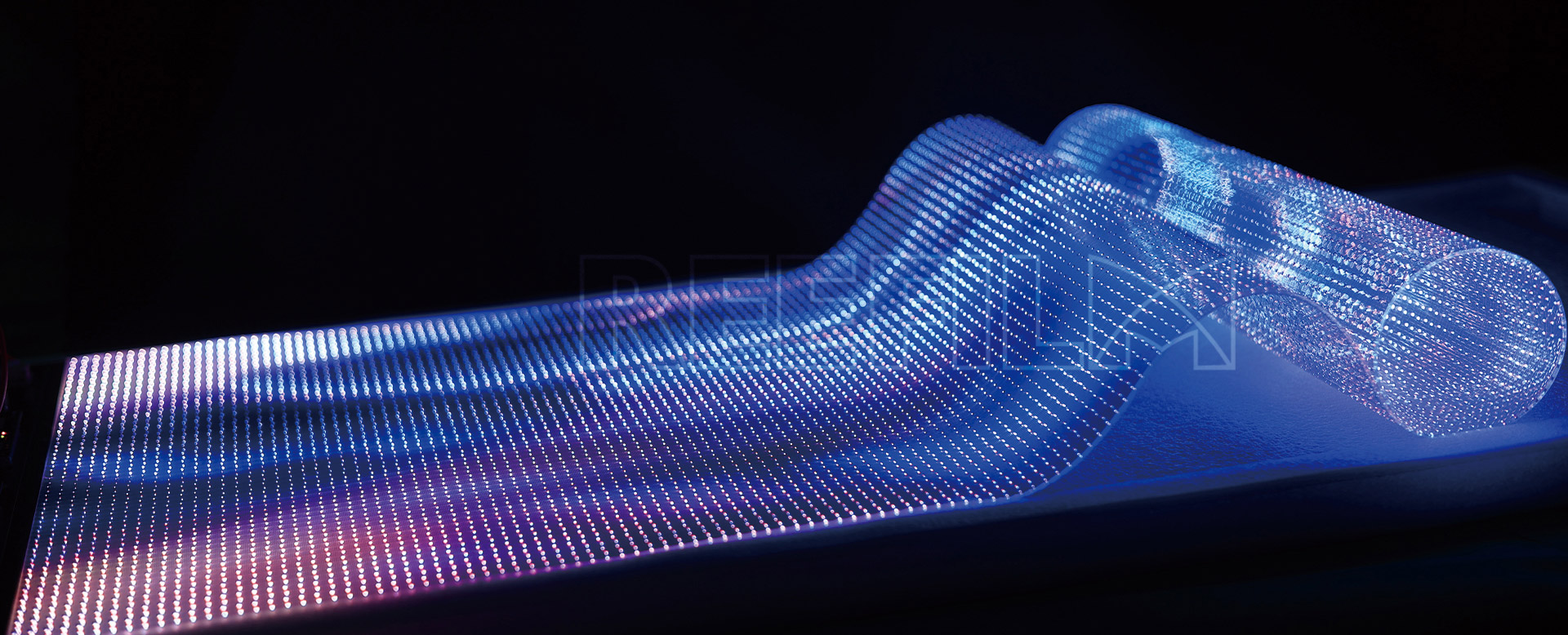REEFILM is a professional Chinese custom LED screen manufacturer, offering a range of innovative LED products, including custom soft LED panels.
What are Custom Soft LED Panels?Custom soft LED panels are flexible LED screens that can be designed and manufactured according to customer needs. These panels are highly flexible and can adapt to spaces of different shapes and sizes. They are made of flexible materials and can be bent, curled, or even rolled into pipes for use, which is very suitable for some irregular display environments.
Features of Custom Soft LED PanelsFlexibility: The biggest feature of soft LED panels is that they can be bent and shaped, suitable for curved, bent or special-shaped display needs. They are particularly suitable for occasions that require innovative and unique visual effects.
High brightness and resolution: REELFILM's soft LED panels use high-quality LED components to ensure clear and bright displays, providing a good visual experience both during the day and at night.
Thin and light design: These panels are very lightweight and easier to install, suitable for projects with limited space or that need to be set up quickly.
High durability: REELFILM's soft LED panels are made of high-quality materials and can cope with complex environments such as high temperature and humidity, ensuring their long-term stability.
Advantages of soft LED panelsCustomization: Through LED panel customization, you can choo





